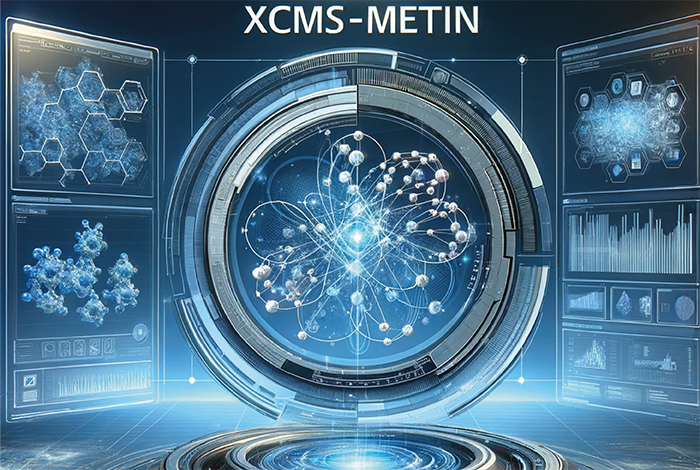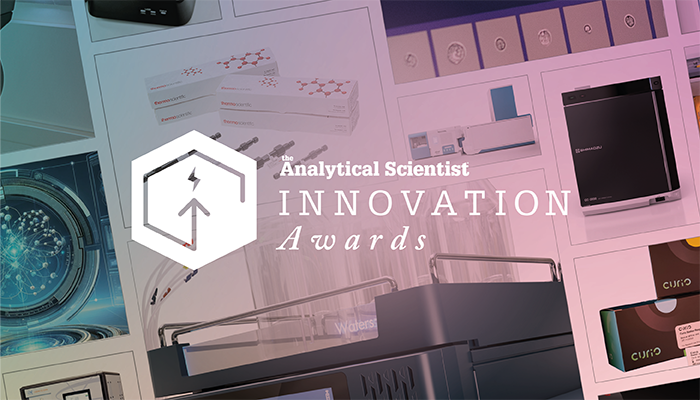
Produced by Shimadzu Corporation
The Brevis GC-2050 is a fully scalable system that can connect to auto-samplers, an MS, and other accessories – but is only 35 cm wide. The system also consumes 30 percent less energy than conventional models and minimizes helium usage – saving labs money and contributing to environmental sustainability. The system also boasts intelligent automated functions, such as auto system check, Clean Pilot, automatic start/stop, and remote monitoring. In addition, the new auto injector and flow controller enable continuous analysis with constant linear velocity, flow rate, and carrier gas pressure control to achieve reproducible results.
Potential impact
The Brevis GC-2050 aims to save space, time, and money for labs, while also cutting down on energy use and making analysis less of a burden for users.
What the judges say…
“Not only is this GC compact, it is sustainable and with lower use of precious helium.”
“Simple, compact, and easy-to-use GC.”
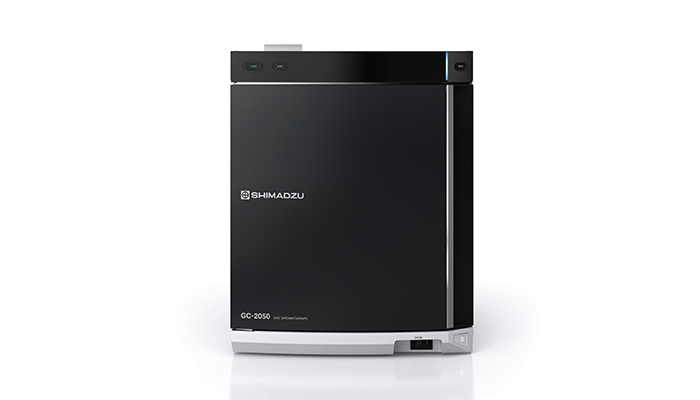
Produced by SepSolve Analytical
The INSIGHT-Thermal allows for flexible control of all modulation parameters within ChromSpace software, including the unique ability to apply linear ramps to the cold jet flow rate – crucial for efficient release of high boiling point analytes (C50+). The new “figure of eight” design of the column holder locks the column into the correct position for precise alignment of the delay loop between the jets – improving usability and repeatability. Finally, the INSIGHT-Thermal is compatible with all popular GCs, allowing existing GC(-MS) systems to be upgraded and benefit from the separating power of GC×GC.
Potential impact
The INSIGHT-Thermal overcomes the problem of irreversible trapping and peak tailing caused by excessive flow rates, improving performance. Automated methods can be scheduled in sequences for confident unattended analysis, improving productivity. And the column holder prevents movement of the column, improving reproducibility.
What the judges say…
“This new approach greatly simplifies two-dimensional GC.”
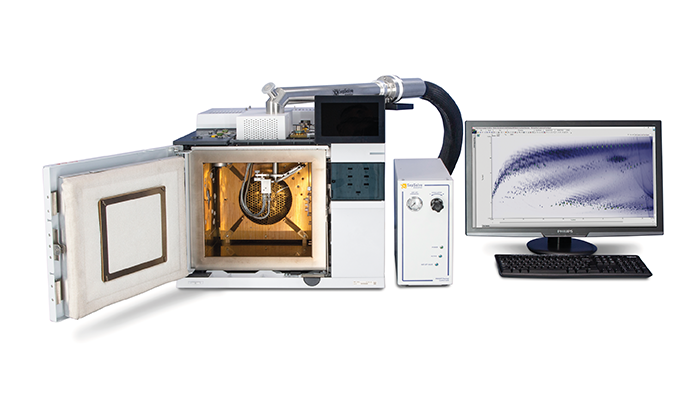
Produced by Ionicon Analytik
The CHARON FUSION PTR-TOF couples IONICON’s next-generation FUSION PTR-TOF analyzer to an improved CHARON particle inlet to reach new limits of detection for organic compounds: <200 ppqv (parts per quadrillion by volume) in the gas phase and low pg m-3 in the particle phase. One of its key components is the fast-SRI reagent ion source that increases the primary reagent ion yield while keeping impurities at a minimum. In addition, switching between different primary ions, such as H3O+, NH4+, NO+, and O2+, is now possible within ~1 s.
Potential impact
The CHARON FUSION PTR-TOF enables real-time quantification of a wide range of compound classes from non-polar aromatic species, such as polycyclic aromatic hydrocarbons (PAHs) and to highly polar compounds (for example, HOMs), at low concentrations. Researchers in the fields of atmospheric chemistry, environmental research, air quality and industrial process monitoring have new means to identify substances at very low concentrations in real-time.
What the judges say…
“A powerful new tool for the analysis of gasses and particles of interest in environmental and industrial applications.”
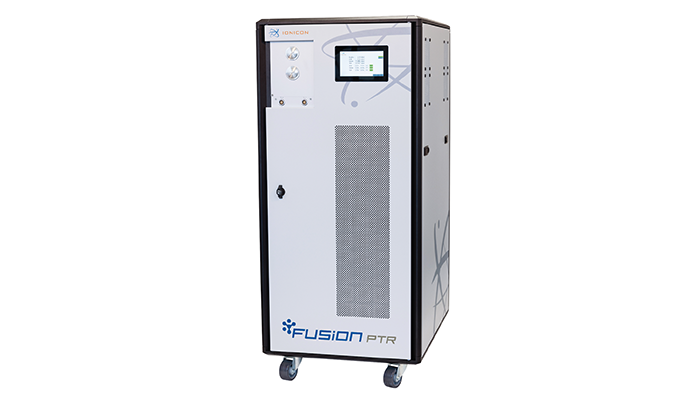
Produced by Oxford Instruments WITec
alphaCART is a mobile, confocal, research-grade Raman system for all applications that need the lab to go to the sample. Its Raman probe can be flexibly positioned in front of bulky, immovable, or precious objects that can’t be transported to a microscope or that don’t fit under one. The system’s high confocality and signal sensitivity also allow measurements through protective glass and windows, which enables studies of gasses or chemical processes inside reaction chambers and other enclosures.
Potential impact
Investigations in archaeology, the arts and cultural heritage, and geoscience are often conducted in the field or secure storage facilities. And materials science, process and civil engineering, and gas analysis experiments are regularly performed outside of conventional lab environments. WITec and Oxford Instruments developed alphaCART to equip researchers working in these conditions with real analytical power. The system can characterize paintings under protective glass, be brought into vaults for nondestructive analysis of priceless treasures, and peer through windows into reaction chambers for real-time chemical process monitoring.
What the judges say…
“A very interesting ‘field deployable’ piece of kit.”
“A nice addition to portable Raman measurements – taking a highly respected manufacturer out of the lab and into the field.”
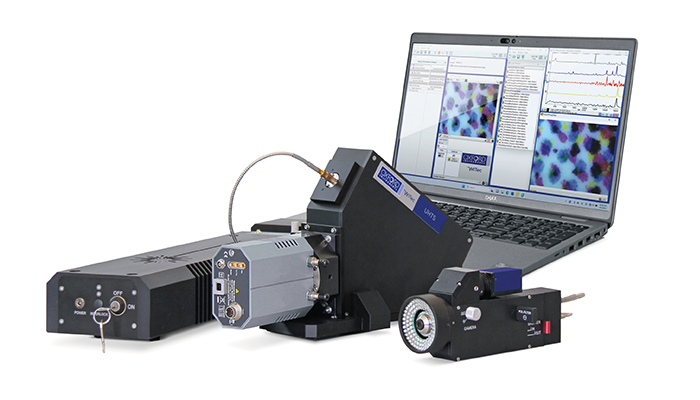
Produced by Waters Corporation
The Alliance iS HPLC is designed to reduce up to 40 percent of common human errors in modern laboratories. The system offers proactive error detection with real-time alerts and pre-run checks, reducing costly re-runs and ensuring product integrity. Its touchscreen interface and guided processes were created to seamlessly integrate with Waters' Empower Software for streamlined data management. The system aims to improve overall efficiency and reliability of pharmaceutical QC processes.
Potential impact
The Alliance iS HPLC System aims to create a ripple effect through the drug development timeline by improving dependability and accelerating the journey to market. The system identifies potential errors early, reducing the number of potential retests and eliminating one of the most common causes for failures in a QC lab that lead to costly investigations, delays and recalls. The Alliance iS HPLC also reduces unplanned instrument downtime and offers a full suite of compliance services.
What the judges say…
“This new QC HPLC instrument from Waters promises to eliminate many of the most common errors observed in QC.”
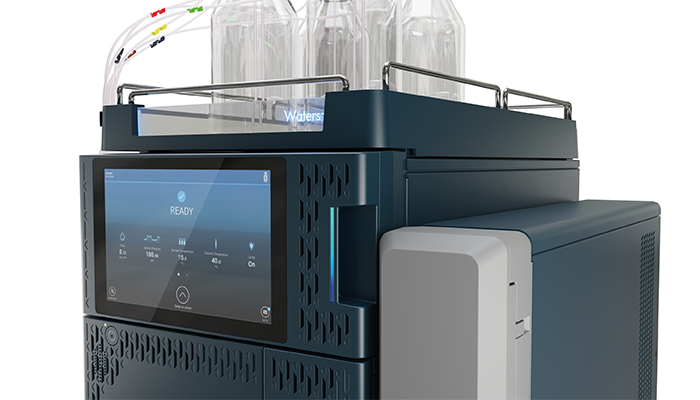
Produced by Thermo Fisher Scientific
Thermo Scientific ProPac 3R HPLC Columns aim to improve protein charge variant analysis and AAV separations in biopharmaceutical research labs by leveraging a novel monodisperse particle platform and strong separation power. The columns are designed with bio-inert materials to reduce secondary interactions, but they also provide improved peak-to-valley resolution of charge variants during late-stage capacity – increasing confidence in the detection and identification of new acidic or basic variants during late-stage development.
Potential impact
Thermo Scientific ProPac 3R HPLC Columns are designed to streamline research processes in biopharmaceutical laboratories performing charge variant analysis of therapeutic proteins, including monoclonal antibodies, and separation of full versus empty AAV capsids used for gene therapy. The new 3 µm particle size enables ultra-high resolution of charge variants, improved peak resolution, and faster run times.
What the judges say…
“A major step forward in the evolution of high-performance materials specifically designed for the analysis of major classes of biotherapeutics.”
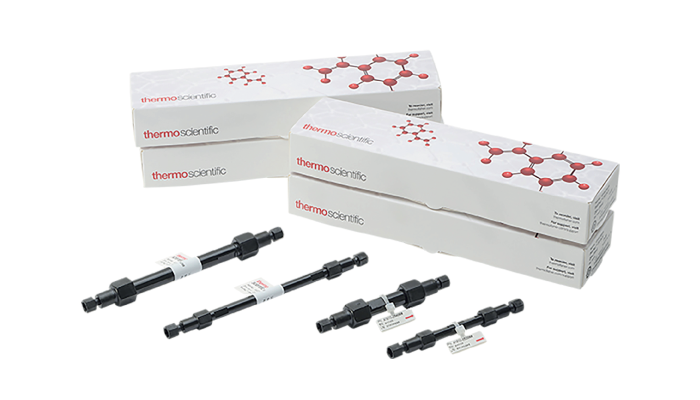
Produced by Syft Technologies
Syft Tracer is a real-time, direct injection mass spectrometry (MS) built to solve difficult analytical challenges. Its unique features – in the realm of real-time trace gas detection – include >50 percent greater sensitivity than legacy platforms, high analytical stability, hardware innovations to lengthen system lifetimes, and system optimization for high-throughput environments, where 24/7 operation is the standard.
Potential impact
Syft Tracer enables users to run chemically diverse compounds in one method or between several methods with a single instrument configuration that does not require column changeover or reequilibration steps. A typical CDMO workflow that involves the analysis of residual solvents, nitrosamines, ethylene oxide, formaldehyde, and benzene could, with Syft Tracer, run 70 samples in 9.25 hours, according to the company; in contrast, that same workload would require five GC systems running for over 24 hours.
What the judges say…
“With the potential to streamline gas analyses, this Syft Tracer is one to watch.”
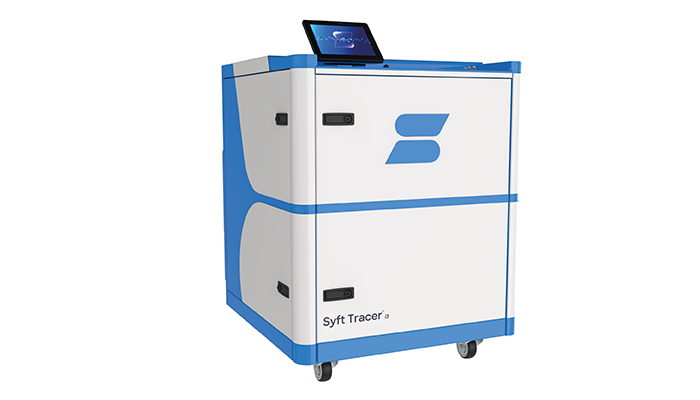
Produced by 908 Devices Inc.
MAVERICK is a Raman-based handheld system built from the ground up for bioprocess analysis. It arrives pre-calibrated using a de novo multivariate model for CHO, HEK, and related cell-lines, and has been validated across more than 30 media types/processes for accurate reporting of glucose, lactate, and biomass – avoiding lengthy empirical calibration approaches. MAVERICK’s operating system is entirely embedded, including digital and analog feed controller outputs, so no external computer is required, and the system can be multiplexed to up to six bioreactors. Numerous safety/convenience features are included for process development, such as electronic probe tracking, immersion detection, and remote web access.
Potential impact
Early- and later-stage bioprocess development is dependent on rapid iterative process observation and optimization to improve time-to-market. Experts in cell biology and bioprocess metabolism are rarely also experts in analytical instrumentation and chemometric modeling. And although a Raman spectrometer may cost $100k-200k to buy, the cost to truly reach productivity can be much higher, with extensive calibration, modeling, and validation phases. MAVERICK aims to make Raman as easy to adopt for the benchtop PD scientists as a pH meter, dO2 probe, REBEL, or Octet.
What the judges say…
“Looks like a nice economical solution to an economically significant problem.”
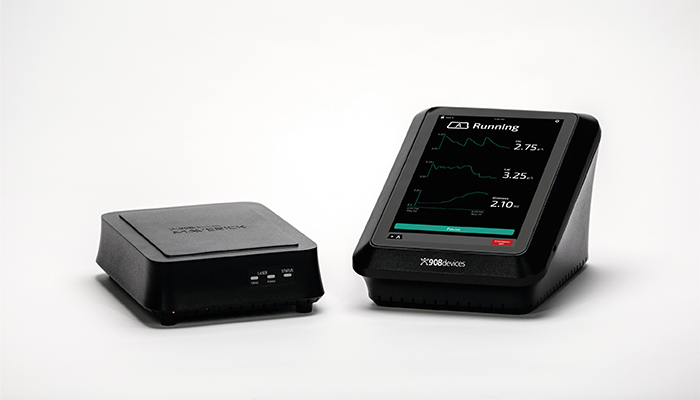
Produced by Leica Microsystems
Autonomous Microscopy enables the automated detection of rare events without the need for human interaction, thus completely automating complex microscopic workflows. Within this autonomous workflow, low-resolution two-dimensional overview images are generated in a first step, which are immediately transferred to the connected AI-based image processing (Aivia) system. This detects the rare events, previously defined by the operator, by means of a pixel classifier and sends the rare event coordinates back to the imaging system, which scans the rare events according to the operator’s specifications, such as high-resolution and three-dimensional data stacks. According to Leica, the Aivia-powered workflow reduces time spent at the microscope by up to 75 percent.
Potential impact
With Autonomous Microscopy powered by Aivia, operator interaction is limited to the initial setup. In addition, objects are detected much faster and more accurately. And the same settings can be applied for other experiments to ensure consistency. Because only objects of interest are identified and captured, data acquisition and final analysis time is significantly reduced. This exclusivity also means significant saving of storage space.
What the judges say…
“AI has been embedded in this confocal ‘autonomous' microscope from Leica enabling enhanced object detection and reducing analysis times.”
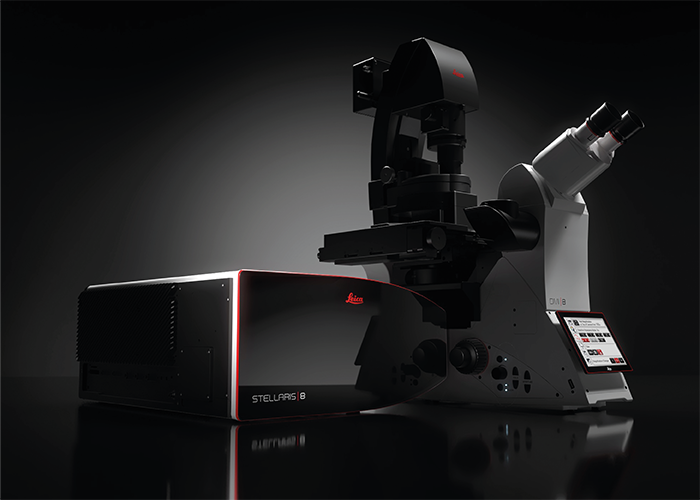
Produced by Bruker Corporation
Bruker’s triple-quad (TQ) mass spectrometer, EVOQ DART-TQ+, features the first and only fully integrated DART (Direct Analysis in Real Time) ionization source. The EVOQ DART-TQ+ eliminates complex and time-consuming gas or liquid chromatography for many point-of-need, routine workflows. The system incorporates simplified tuning and method development through data analysis and report generation for improved efficiency and productivity.
Potential impact
Customers in the applied mass spectrometry market require simplified, robust, cost-effective, and environmentally sustainable workflows. With the chromatography-free EVOQ DART-TQ+, Bruker aims to “bring MS to the masses” by simplifying workflows with greater ease-of-use, shorter analysis times, lower cost of ownership, and significantly reduced solvent usage.
What the judges say…
“DART in the fast lane allows chromatography free analysis of difficult to access samples.”
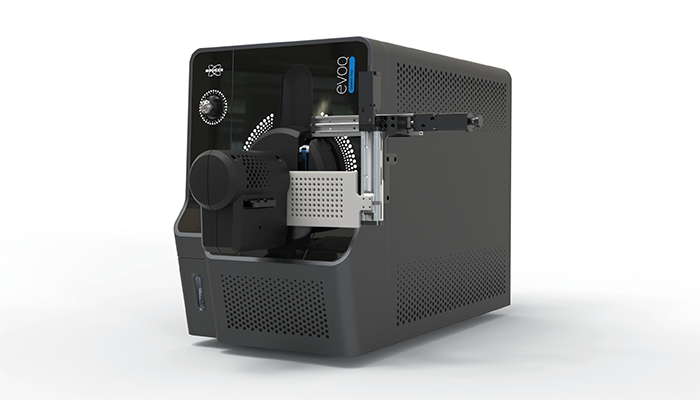
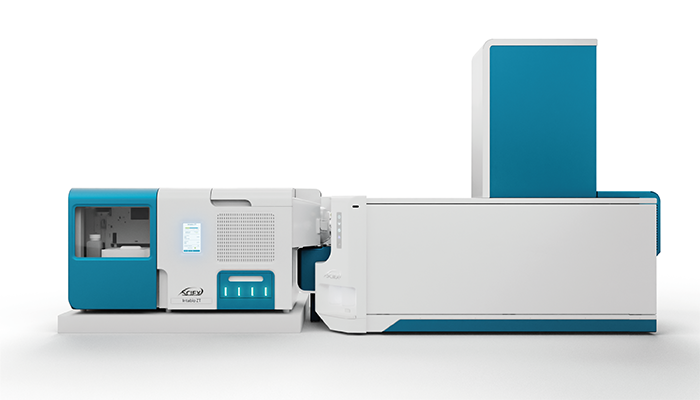
Produced by Deepcell
Despite recent advancements in microscopy and flow cytometry, existing tools for cellular quantification and characterization have left the field of cell biology hypothesis largely reliant on human interpretation. With the new generation of AI and machine learning models, such as Deepcell’s Human Foundation Model, cell morphology can finally join other high-dimensional, single cell analysis methods and enable researchers to realize the full potential of the morpholome.
Potential impact
By bringing together single cell imaging, sorting, and high-dimensional analysis, the REM-I Platform aims to catalyze new methods of discovery in a wide range of fields, including cancer biology, developmental biology, stem cell biology, gene therapy, and functional screening.
What the judges say…
“Cell morphology is an interesting and important parameter within any phenotypic analysis and this AI guided system allows enhanced single cell analysis.”
“This new platform provides a substantially improved basis for characterizing single cells.”
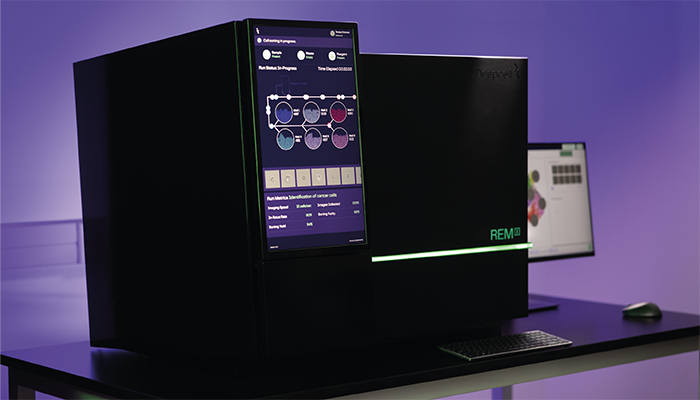
Produced by Thermo Fisher Scientific
The Orbitrap Astral Mass Spectrometer combines three mass analyzers: a quadrupole mass analyzer for high selectivity and high ion transmission, an Orbitrap mass analyzer for high dynamic range and high resolution measurements, and the novel Astral analyzer for fast and sensitive measurements. By combining these three mass analyzers and orchestrating the coordination of five separate ion packets within the instrument in parallel, Thermo delivers substantially faster analysis and the highest proteome coverage of any available instrument platform.
Potential impact
The Orbitrap Astral Mass Spectrometer enables a faster throughput with a run time of 8 minutes per sample, injection-to-injection, allowing users to run 180 samples per day. In addition, each sample injection allows users to identify over 8,000 proteins for a typical cell lysate sample. This faster throughput enables the measurement of tens of thousands of samples in one year with just one instrument, without sacrificing depth or precision. This increases the scale of studies that can be performed in fields such as precision medicine and biomarker discovery, accelerating the discovery of new insights. Thermo believes the Astral will accelerate the pace of omics research, enabling proteomics and metabolomics to reach a scale previously only achievable in genomics.
What the judges say…
“Combining three mass analysers, this Orbitrap Astral solution from Thermo Fisher looks highly attractive for proteomics and metabolomics.”
“A breakthrough in high throughput proteomics with increased sequence coverage.”
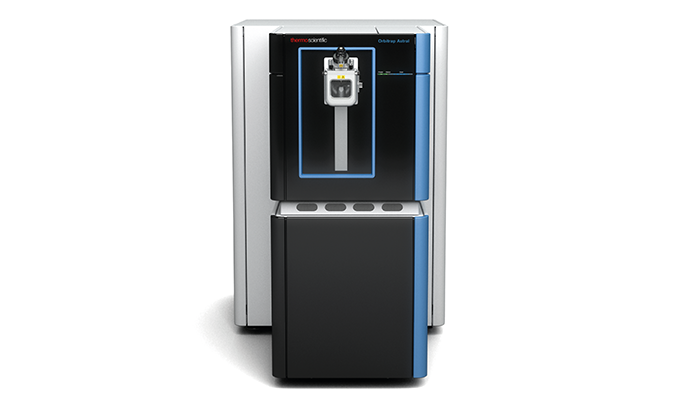
Produced by Curio Bioscience
Curio Seeker Spatial Mapping Kits are the world’s first high-resolution, whole transcriptome spatial mapping solution. They lower the barrier of entry to complex spatial transcriptomic analysis of fresh frozen tissues by plugging directly into existing sequencing workflows; and they require no specialized personnel, instrumentation, or expertise with microscopy. The Curio Seeker Kit generates up to one million continuous whole transcriptomes from any species or tissues at single-cell scale resolution, without modifications to the standard protocol, or optimization of the tissue samples.
Potential impact
Curio Seeker Spatial Mapping Kits aim to take discovery beyond what is possible with current single-cell sequencing methods and have applications in both basic and applied research – from developmental biology to viral immunology. The technology enables an understanding of the complex cellular environments of biological systems during development, normal function, disease/injury, and treatment. For example, recognizing the presence of specific immune cell types and their locations relative to tumor tissue has led to understanding the mechanism of immune escape in cancer recurrence and metastasis.
What the judges say…
“This powerful new tool simplifies detailed mapping of tissues at the single cell level.”
“A new step in spatial biology.”
“An interesting development that could be the first high-resolution, whole transcriptome spatial mapping solution on the market for tissue and cell analyses.”
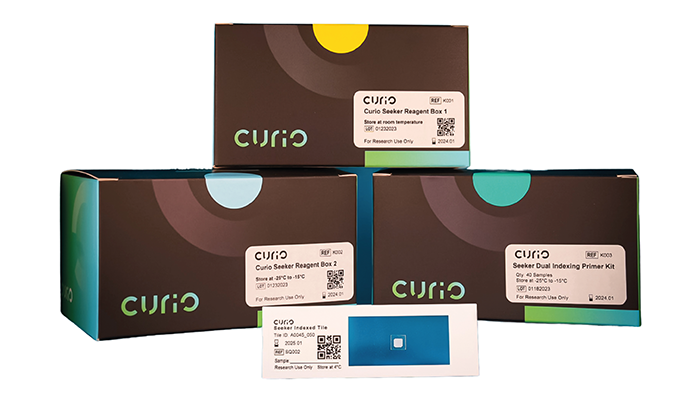
Produced by Mass Consortium Corporation
The release of the newly created XCMS-METLIN data analysis platform is the culmination of a two-decade-long effort aiming to revolutionize LC/MS/MS data analysis. XCMS has been a pivotal metabolomics and lipidomics technology since the early 2000s when it introduced nonlinear LC/MS retention time alignment combined with statistical analysis. However, its primary limitation has been in structurally characterizing the statistically significant molecules. To rectify this, Mass Consortium has integrated XCMS with METLIN, a comprehensive MS/MS database that is 10 times bigger than the next largest. METLIN has collected data in both positive and negative ionization mode across four collision energies on over 930,000 authentic reference standards.
Potential impact
Tandem mass spectrometry (MS/MS)-based metabolomic and lipidomic analyses hold enormous potential for understanding biological systems and play a pivotal role in fundamental biology, drug discovery, personalized medicine, and many related fields. However, the reliable identification of metabolites remains a major challenge, impeding the field’s meaningful contribution. Mass Consortium’s integrated XCMS-METLIN platform aims to address this problem with its enormous database. Unlike some other data processing platforms, XCMS-METLIN is a purely data-driven platform, circumventing speculative identifications, thus relying solely on real data for real identifications.
What the judges say…
“This enormous database addresses a major difficulty in the field of metabolomics and lipidomics.”
“With MS/MS data on over 930,000 authentic standards this could become the de facto standard library for small molecule analysis.”
